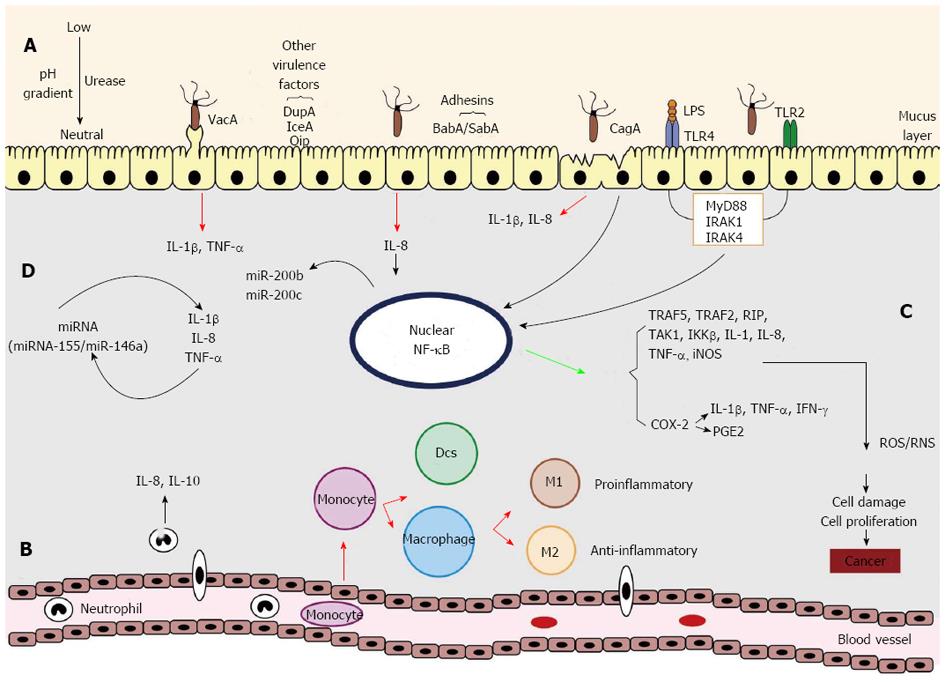Copyright
©2014 Baishideng Publishing Group Co.
World J Gastroenterol. Feb 14, 2014; 20(6): 1424-1437
Published online Feb 14, 2014. doi: 10.3748/wjg.v20.i6.1424
Published online Feb 14, 2014. doi: 10.3748/wjg.v20.i6.1424
Figure 1 Pathogenesis of Helicobacter pylori infection and host immune response.
A: Bacterial urease neutralizes the gastric pH, enabling the colonization of gastric epithelial cells by the bacteria and their motility in the mucus layer. Adhesion of the bacteria to the gastric epithelium is mediated by BabA and SabA adhesins, allowing the release of factors CagA and VacA into the host cells, which causes a strong systemic immune response and inflammation of the gastric mucosa. Helicobacter pylori LPS is recognized by toll-like receptors, mainly TLR4 and TLR2, in cooperation with the adapter molecule MyD88 associated with IRAK1 and IRAK4 that leads to activation of transcription factor NF-κB, activating inflammatory signaling pathways; B: The immune response is also activated, with the recruitment of inflammatory cells at the infection site, inducing the production of various pro- and anti-inflammatory mediators; C: After NF-κB activation, rapid expression of multiple pro-inflammatory cytokines, chemokines such as the tumor necrosis factor alpha (TNF-α) and interleukins, and consequently activation of oncogenic pathways may culminate in cancer; D: The expression of some miRNAs is changed by H. pylori infection and the host immune response is regulated accordingly. LPS: Lipopolysaccharides; IL: Interleukin; COX-2: Cyclooxygenase; RNS: Reactive nitrogen species; ROS: Reactive oxygen species; IFN: Interferon.
-
Citation: Cadamuro ACT, Rossi AFT, Maniezzo NM, Silva AE.
Helicobacter pylori infection: Host immune response, implications on gene expression and microRNAs. World J Gastroenterol 2014; 20(6): 1424-1437 - URL: https://www.wjgnet.com/1007-9327/full/v20/i6/1424.htm
- DOI: https://dx.doi.org/10.3748/wjg.v20.i6.1424









